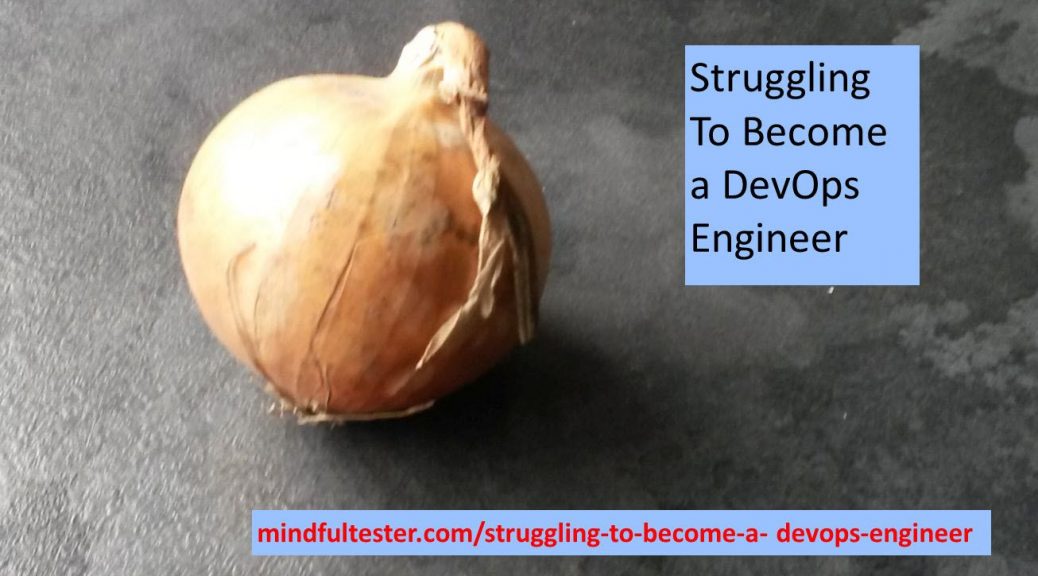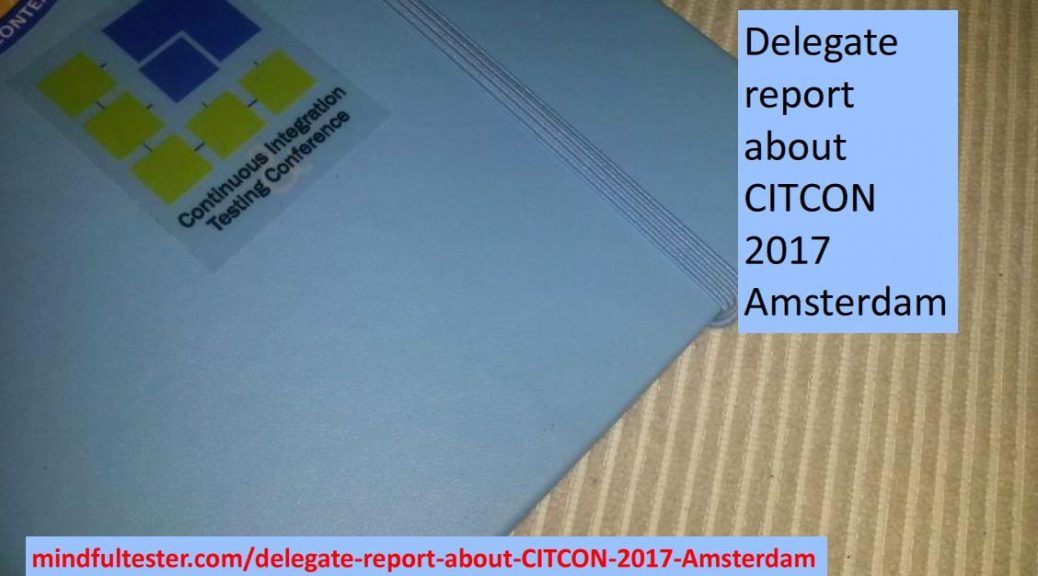Sometimes when I am cooking, a bored kid asks:
“How can I help?”
My answer is:
“You can cut the vegetables.” Or
“You can stir in the pan.”
When my kids were smaller, they loved to make pizza. And even small hands are handy for peeling off the brown layers of an onion.
Pair programming
The Test column was empty for a few days and I had finished all preparations for the items in progress. Was there a way that I as a tester could help the DevOps engineers?
“We can do pair programming.”
I was all ears and eyes. So I joined a programmer while he was coding. Once in a while he said his thoughts aloud.
“Okay, now it is your turn.”
I looked at the DevOps engineer expectantly:
“What do I have to do?”
“Programming”
“I mean: what must I program?”
A short dialogue followed. My knowledge of the development environment was almost zero and I did not know everything about Java.
“You better take a course at Pluralsight.”
Pluralsight and Java
In this company every DevOps engineer and the tester (that’s me) had access to Pluralsight. Courtesy of the employer. Pluralsight is an online course platform with a massive load of courses.
“There is a test to determine how good you are.”
Sure no problem.
A lot of readers might think:
“Wow, I would hire Mindful Tester.”
Sorry gals and guys. Up to 40% of all people got this level. This basically means that 2 out of 5 people knew as much about Java as me. Not enough to make complex changes.
Now Pluralsight had another nice feature called learning path. So I dutifully cruised through the courses. I had the advantage of two screens, so I could play the course on 1 screen and program on the other 1.
I had some doubts about the courses. It was like a typing course. Just enter the text and you have a working program. Tada.
Another doubt was the absence of Test Driven Development. I shared my concern with a bright DevOps engineer. He reassured me:
“First focus on the language, then the rest will come.”
The same engineer noted the lack of challenge, so he referred me to project Euler. This free online platform had mathematical / programming problems. Afterwards he reviewed my Java code, which I really appreciated.
Java is great, but my team used more tools to develop programs. So I followed courses on Spring and Maven.
At the end of the course I could get some certificate. With no real practice I had some knowledge. On the other hand my experienced DevOps engineers loved Pluralsight. They set the video speed to double speed and picked up their nuggets of knowledge.
HTML, CSS, and JavaScript
“I noticed that you focused on layout.” my scrum master said.
“We need someone who can design good interfaces. Maybe you should focus on the front-end.”
In this company the front-end was a website. So I had to study HTML or HyperText Markup Language, the basic programming language of web pages. I was familiar with HTML. <b> hello </b> is shown as hello. b is short for bold.
I picked a Pluralsight course for advanced web development. This was both horrifying and clarifying.
So I should have basic JavaScript and CSS knowledge. I picked a course with JavaScript: CSS was needed. I switched to CSS. Only HTML was needed. Phew.
What is CSS or Cascading Style Sheets? In my own words it is a way to style a website in s consistent style. E.g. all the buttons look alike and the web page can respond to different screen sizes.
I followed two courses of CSS. They were practical, so I was able to modify the look and feel of a website without changing the functionality.
Next stop on Pluralsight was JavaScript. In my own words this language is used by browsers on the computers or mobile phone of the users. This programming language basically reduces the traffic between the front-end (e,g, website) and the back-end, where the important things happen like handling a payment.
I was lucky again. There were some basic courses which gave me some practice with JavaScript.
If I look at Pluralsight there are some good courses, but it took time to find them.
Edx.org
The biggest disadvantage of Pluralsight was no examination. My scrum master found an interesting alternative, edx.org.
You could call it freemium. The course and examination are free, but you have to pay a premium for the certificate.
Freemium is “free premium” without ” pre”.
I picked HTML5. The course was for beginners. But I was really happy with all the Pluralsight knowledge obtained. The course gave me a good insight in HTML5, but it also showed its limitations.
Next certificate was CSS Basics. Again I had an advantage and obtained enough points for a certificate.
ReactJS should be possible with my basic knowledge of JavaScript. In my own words ReactJS is a language, which can better interact with users than HTML5. The course was tough and I dropped out.
Edx.org and Pluralsight
Edx.org had the same choice problems as Pluralsight. I had to follow course parts to determine whether there was a click.
A major difference is, that Edx.org courses are time bound. After a deadline the course is closed and only accessible for old students of this particular course.
Edx.org has a slight advantage that it offers up-to-date information. Pluralsight has some old courses. For a Maven course this is tricky. Old versions as shown in the video cannot be used.
Another deadline disadvantage of edx.org is that timing is personal. Several courses acquire 2 hours a week. For someone new to coding this number is too low. Sometimes one block of 2 hours would take me 40 hours. There is also a deadline for a certificate. My advice is first to get the required numbers of points and then buy the certificate.
Once I bought a discounted certificate before getting the required points. Let me write it was not my best investment. There are limitations to be aware of.
Security, privacy, and usability
A DevOps engineer does more things than programming. So I learned about website security, privacy laws, and usability.
In the meantime I acquired some DevOps skills like looking in and understanding log files.
Status update
In April 2018 I got the disturbing news, that I was fired.
No bingo for me.
In case you want to know what I am doing right now.
Thanks for reading. I really appreciate it. Cheers.
Other online courses
This year Trish Koo asked for some online programming courses In the answers there are some online platforms I will try the next time.



